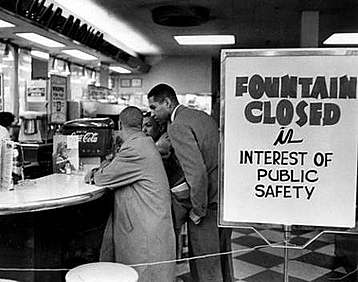Don't try to mobilize 3.5% of the population
“Where is everybody?” My fellow protest organizer asks me. I feel tired and a bit frustrated, as only 10 activists showed up for our second demonstration of 2023 in Amsterdam. It is quite cold again, likely am important factor for the small-turnout.
As an activist, this challenge of low turnouts might feel familiar. One of the most difficult challenges for activists is mobilizing large numbers for their protests. To change from a minor movement to a mass movement takes a lot of effort, strategy and media attention. Most of us focus at increasing mass participation, but is this the most strategic approach?
The 3.5% rule
One of the most famous nonviolent movement scholars at the moment, Erica Chenoweth, wrote an inspirational book with Maria Stephan in 2011 on peaceful revolutions. They found that when activists managed to mobilize 3.5% of the population, their movements had always succeeded.
Chenoweth, trained in quantitative methods within war studies, applied and innovated the field with the creation of a large data base and quantitative methods. This is called the Nonviolent and Violent Conflict Outcomes (NAVCO) dataset. Back then, the data applied to 323 revolutions between 1900 and 2006. Now it even has 627 revolutions.
In this research Erica and Maria wanted to find out two things: is nonviolence more effective and why is nonviolence more effective? They proved that nonviolent revolutions are twice (53%) as effective as violent revolutions, among many other positive things. They also found out the structural factors for why nonviolent movements are more successful: defections and mass mobilization.
Defection is the conversion of the opponent or the so-called pillars of support of a government. Mass mobilization is the mobilization of a large amount of the population to become involved (often in the form of disobedience). Only 3.5% of a population would be enough to succeed.
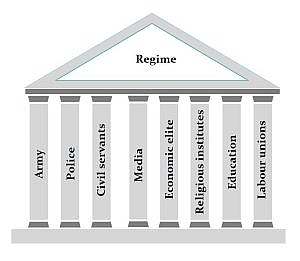 Pillars of Support are the groups within society that enable obedience
Pillars of Support are the groups within society that enable obedience
Since 2011 – Mass Movements
After the ground-breaking research of Chenoweth and Stephan, movements embraced the 3.5% rule, this was also surrounding the nonviolent revolutions in Tunisia, Egypt, Syria and Occupy movement.
In 2016, both authors wrote an article in the Washington Post where they under-valued the ability to incite defections and put forward the power of greater potential mass participation of the population. Also in her newest (and absolutely outstanding) book Chenoweth argues that victory is less the result of melting the hearts of the opponent, but the mobilization of the population. In this blog I will provide an alternative perspective.
While there are more nonviolent movements than ever, their success rates have declined, compared with the movements before 2000.
We have seen massive movements with many millions of supporters on the streets, that failed. Inspirational events like the revolutions in Tunisia, Egypt and later Sudan, were hijacked by the armed forces – degenerating into violence again after a while.
This might be the result of an incorrect focus, a lack of the correct strategy within nonviolent movements. It was Chenoweth herself (which shows her powerful capability as researcher) that found out the missing link.
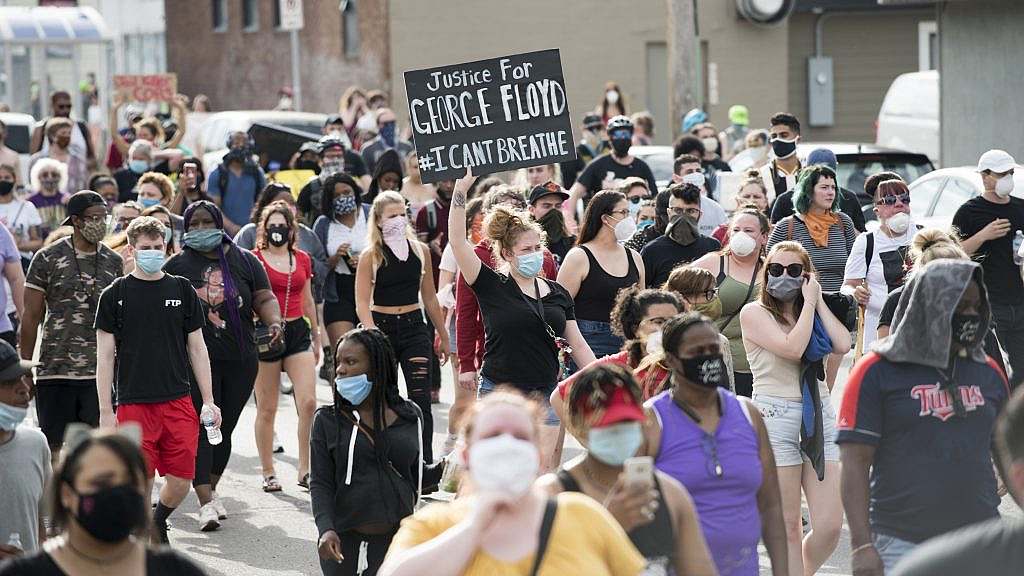
2022 – New Research
What is the best strategy to gain victory? This was the central question in the research article ‘A dynamic model of nonviolent resistance strategy‘ of Erica Chenoweth, with Andrew Hocking and Zoe Marks.
The authors studied three well-known strategies within nonviolent conflict.
These strategies are:
- Mass participation to overwhelm the sources of political power of the opponent and incite widespread defections.
- Committed activists inspire civilians to protest, even when unable to protest themselves such as under arrest.
- Campaigns mainly focused on pillars of support.
The conclusions are quite insightful. Before I delve into the findings, it is important to understand the research method. They use an agent-based model (quantitative method based on computer calculating power) to analyze behaviour within a timeframe, such as expected actions of groups and moment they change these actions. For more depth (scholarly article, a bit complex) I can recommend reading the article itself as well.
The first and second strategy led to success for larger movements, but did not lead to greater chance of success for smaller movements.
The third strategy, the focus on defection of the pillars of support however, explains why smaller movements can succeed and why large movements fail.
In this article Chenoweth highlighted the danger that because of prior scholarship activists might focus all their time and energy on growing the membership of their movement or participation of protests.
Instead, they argue, that the more effective a movement is in correctly assessing the loyalty of pillars of support and developing a unified strategy to stimulate the defection of those pillars, the most successful they will be. It also enables small movements to succeed, while when ignored, can prevent large movements from gaining victory.
OK, so this were the results of most up-to-date research. What does this mean for activists?
Strategy is more important than numbers
The findings mean that when activists want to gain victory in their nonviolent movements, it is more important to focus on strategy than the numbers.
Yes, the numbers are still extremely important and the 3.5% rule is still a crucial guideline. But without a strategy focussed on the defection of the pillars of support, it can easily fail. Furthermore, as it is so difficult for small movements to become mass movements, the effectiveness remains low.
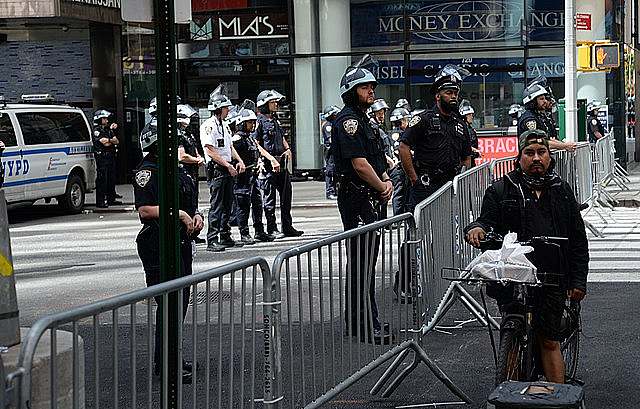
Intelligence of Pillars of Support is crucial
To ensure the defection of the pillars of support, knowing them and being connected to them is important.
Ground-breaking is the divergence from focus on mass participation, which has been the defining strategy for many nonviolent movements in the past decade(s). It does give clarity on why success rates have been declining.
Instead of the focus on mass participation as most effective strategy for nonviolent conflict, the authors put forward that a focus on the defection of pillars of power and police are the most effective strategy. This has large implications. It changes the focus from movement building and population activation towards knowledge of the opponent and strategy based on intelligence on loyalty and disloyalty.
We can see comparisons here within the (military) counterinsurgency debate, from the population-centric ‘winning hearts and minds’ strategy to more enemy-centric strategies. And thus, we return to the strategic core: Sun Tzu, and his focus on the need for intelligence and deception. We must spend a lot of our time knowing the opponent. This deep intelligence of the opponent, your own movement and the population at large, is what Rev. James Lawson made so successful in Nashville.
Click on image to read more about the Nasvhille sit-ins
Focus on defection of armed opponents
This leads us to one deeper level of focus and likely the very core of how to gain consistent victory in nonviolent movements: the defection of armed opponents. Chenowth and Stephan already found out this crucial importance, but the mass mobilization and 3.5% became the core focus in the last decade.
Power comes from one source: obedience. There is really only one counter-move opponents can use to regain obedience of a disobedient population: violence. Through the (treat of) violence such as arrest, tear gas or worse, governments can maintain control.
This is only possible when the armed elements remain obedient: the police and army. All the other pillars of support are important, but not crucial. Without police and army, the government is powerless. Our prime focus should thus be, the conversion of police and army. It is melting their hearts, that wins nonviolent conflicts.
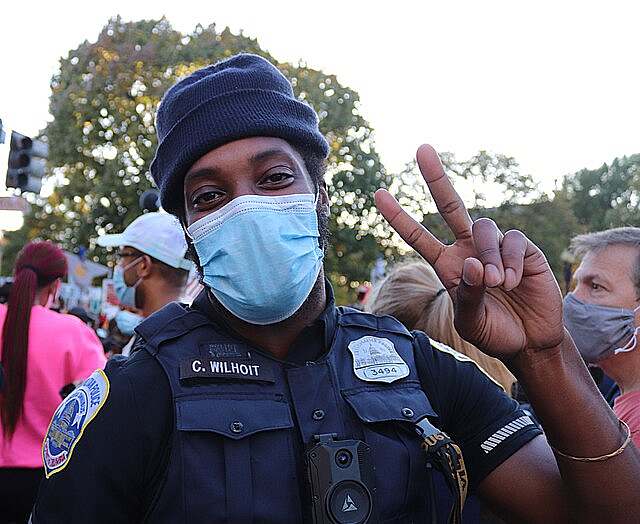
How could we do this? By thinking deeply on how they feel, what they need in their hearts. Most soldiers and police officers are young men between 18 and 30. What do they want most?
- From their mothers: love and care.
- From their fathers: pride.
- From beautiful girls: their attention.
- From grandparents: compliments.
- From their enemies (other young men): their anger, as they signed up to fight ‘the bad guys.’
We can use this in every protest, mothers giving young police offers love and care, beautiful girls giving them their attention, fathers showing that they are proud on their service. This tactic is known as: ‘fraternizing.’
We can also use it to influence the hearts of police and army in the opposite way. Withholding what they want:
- From their mothers: anger.
- From their fathers: disappointment.
- From beautiful girls: ignored.
- From grandparents: criticism.
- From their enemies (other young men): Calmness, as they signed up to fight ‘the bad guys.’
Focus on melting the hearts of young armed men and win
At the core of every strategy should be the conversion of the armed forces of an opponent. They are the primal source of their negative power. Focusing on understanding and becoming able to influence their hearts, their human emotions.
When you become able to melt their hearts consistently, you ensure that every time you turn into a mass movement (or even before), you win!

If you found this blog interesting, I would be super curious to your feedback in the comments. I experienced it as a major insight.
